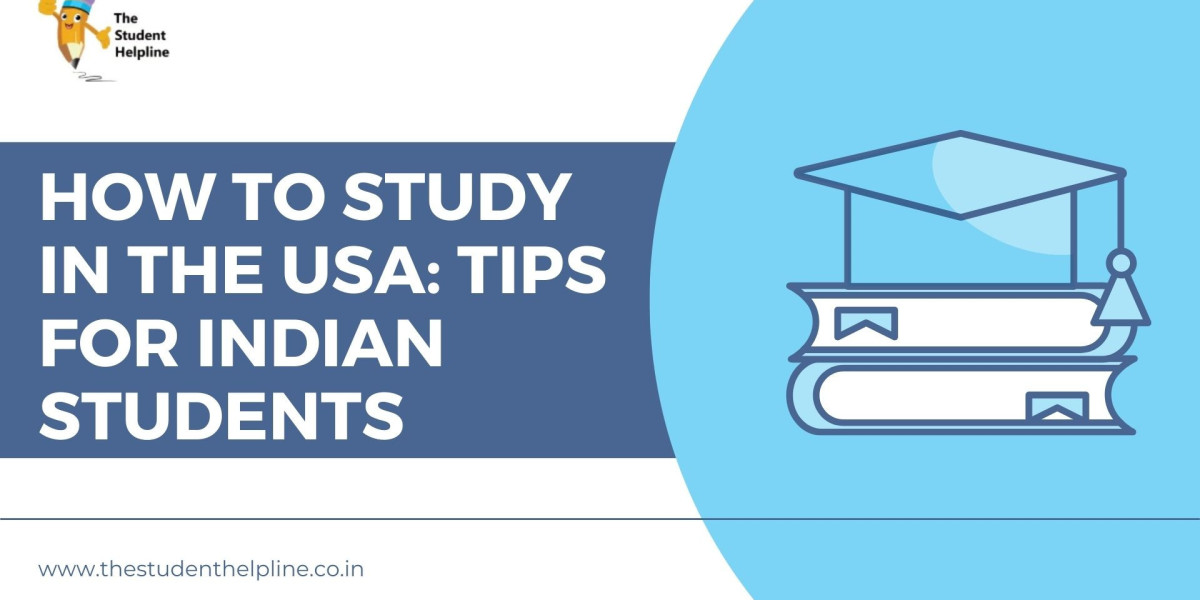Studying in the USA is a dream for many Indian students. With its world-class universities, diverse culture, and plethora of opportunities, the USA remains one of the top destinations for higher education. However, the process of getting there can be daunting and confusing, especially for first-timers. This guide will help you navigate the process, from choosing the right university to understanding the visa process, and settling in once you arrive. Here’s everything you need to know about how to study in USA, tailored specifically for Indian students.
1. Why Study in the USA?
Quality of Education
The USA is home to some of the world’s most prestigious universities, such as Harvard, MIT, Stanford, and more. These institutions are known for their cutting-edge research, experienced faculty, and a wide range of programs. The education system encourages innovation, critical thinking, and hands-on experience, which helps students develop the skills necessary for their careers.
Diverse Range of Programs
Whether you’re interested in engineering, business, arts, or any other field, American universities offer a diverse range of programs to suit your interests. Moreover, the flexibility of the education system allows students to explore multiple disciplines before settling on a major.
Global Exposure and Networking Opportunities
Studying in the USA provides exposure to a global community, where you can interact with students from different countries and cultures. This not only broadens your perspective but also helps in building a global network, which can be invaluable for your future career.
Strong Alumni Network
Many American universities have strong alumni networks that provide support and opportunities for current students and recent graduates. Being part of such a network can open doors to internships, jobs, and mentorship opportunities.
2. Choosing the Right University
Researching Universities
Choosing the right university is one of the most important steps in your journey to study in america. Start by researching universities that offer programs in your field of interest. Websites like U.S. News & World Report and QS World University Rankings provide rankings and information on universities based on various criteria such as academic reputation, faculty, and student satisfaction.
Considering Location and Campus Life
The location of the university can significantly impact your experience. Some students prefer universities in big cities like New York, Los Angeles, or Boston, while others may prefer smaller towns. Consider the climate, cost of living, and cultural environment when choosing a location. Additionally, research the campus life, including clubs, organizations, and support services that can enhance your overall experience.
Understanding Admission Requirements
Each university has its own set of admission requirements, including standardized tests like the SAT, ACT, GRE, or GMAT. Make sure you understand the requirements for each university you’re interested in and start preparing well in advance. Additionally, consider the average GPA, required essays, and recommendation letters when applying.
3. Understanding the Application Process
Standardized Tests
Most universities in the USA require standardized test scores as part of the admission process. The SAT or ACT is typically required for undergraduate programs, while the GRE or GMAT is required for graduate programs. Make sure to check the specific requirements of the universities you’re applying to and allocate sufficient time for preparation.
Application Essays
The application essay, often referred to as a personal statement, is a crucial part of your application. It’s your opportunity to showcase your personality, achievements, and aspirations. Be honest, reflective, and make sure your essay aligns with the values and mission of the university.
Letters of Recommendation
Most universities require letters of recommendation from teachers, professors, or employers who can vouch for your academic and professional abilities. Choose recommenders who know you well and can provide detailed and specific examples of your strengths.
Deadlines and Timelines
Application deadlines vary depending on the university and program. Generally, deadlines for fall admissions (which is the most popular intake) are between November and January. Start the application process at least a year in advance to ensure you have enough time to gather all the required documents and complete your applications.
4. Financing Your Education
Tuition Fees and Living Expenses
Studying in the USA can be expensive, with tuition fees ranging from $20,000 to $70,000 per year depending on the university and program. In addition to tuition, you’ll need to budget for living expenses, including accommodation, food, transportation, and health insurance. It’s important to plan your finances carefully and explore all available options for funding.
Scholarships and Financial Aid
Many universities offer scholarships and financial aid to international students, including those from India. Research the scholarships offered by the universities you’re applying to and consider external scholarships from organizations like the Fulbright Program, Tata Scholarships, and Inlaks Scholarships. Some universities also offer need-based financial aid, which can significantly reduce the cost of your education.
Education Loans
If scholarships and financial aid don’t cover all your expenses, consider taking out an education loan. Many banks in India offer loans for students who want to study in the USA. Compare interest rates, repayment terms, and other conditions before choosing a loan. Additionally, some loans offer a moratorium period, allowing you to start repaying after you complete your education.
5. Visa Process and Documentation
Types of Student Visas
To study in the USA, you’ll need to apply for an F-1 student visa. This visa allows you to stay in the USA for the duration of your program. If you’re going for a short-term course or exchange program, you may need a J-1 visa. Make sure you understand the visa requirements and start the application process as soon as you receive your admission letter.
Visa Interview
The visa interview is a critical part of the application process. The consular officer will ask questions about your study plans, university choice, financial situation, and ties to India. Be honest and confident in your answers, and make sure to carry all the required documents, including your passport, visa application form, SEVIS fee receipt, admission letter, financial documents, and academic transcripts.
Preparing for the Interview
To prepare for the interview, practice answering common questions like why you chose the USA, why you selected a particular university, how you plan to finance your education, and what your future plans are after completing your degree. Your answers should reflect your genuine intentions and your ability to succeed in the USA.
6. Preparing for Your Departure
Accommodation
Once you receive your visa, start looking for accommodation. Many universities offer on-campus housing, which is convenient and allows you to immerse yourself in campus life. If you prefer off-campus housing, research options in the area and consider factors like proximity to the university, rent, and safety. Websites like HousingAnywhere and Zillow can help you find suitable accommodation.
Packing Essentials
Make a list of essentials you’ll need to take with you, including clothing, toiletries, electronics, and important documents. Remember to pack according to the climate of your destination. It’s also a good idea to carry some basic cooking supplies and Indian spices if you plan to cook your own meals.
Health Insurance
Health insurance is mandatory for international students in the USA. Many universities offer their own health insurance plans, but you can also opt for a private plan if it meets the university’s requirements. Make sure you understand what the insurance covers and how to use it in case of an emergency.
Understanding Cultural Differences
Moving to a new country can be a culture shock, especially if you’re unfamiliar with the customs and social norms. Take time to learn about American culture, including communication styles, social etiquette, and daily life. Being open-minded and adaptable will help you adjust more easily and make the most of your experience.
7. Settling in the USA
Orientation Programs
Most universities offer orientation programs for international students, which are designed to help you settle in and familiarize yourself with the campus and resources. Attend these programs to meet other students, learn about academic expectations, and get tips on living in the USA.
Building a Support System
Being away from home can be challenging, especially in the beginning. Build a support system by connecting with other Indian students, joining clubs and organizations, and making friends with students from different backgrounds. Many universities have Indian student associations that organize cultural events and provide support for new students.
Balancing Academics and Social Life
The academic workload in the USA can be intense, but it’s important to find a balance between your studies and social life. Get involved in extracurricular activities, explore the city, and take time to relax and unwind. Balancing your academics and social life will help you stay focused and enjoy your time in the USA.
Part-Time Work and Internships
As an international student, you’re allowed to work part-time on-campus for up to 20 hours a week during the semester and full-time during breaks. This can help you earn some extra money and gain work experience. Additionally, look for internships related to your field of study, as they can provide valuable hands-on experience and help you build a professional network.
8. Career Opportunities After Graduation
Optional Practical Training (OPT)
Optional Practical Training (OPT) allows international students to work in the USA for up to 12 months after completing their degree. For students in STEM fields (Science, Technology, Engineering, and Mathematics), the OPT period can be extended by an additional 24 months. OPT is a great way to gain work experience in your field and explore job opportunities in the USA.
Applying for Jobs
Start applying for jobs well before you graduate. Use resources like your university’s career center, job portals like LinkedIn, and networking events to find job opportunities. Tailor your resume and cover letter to each job application and prepare for interviews by practicing common questions and researching the company.
H-1B Visa
If you secure a job in the USA after graduation, your employer may sponsor you for an H-1B visa, which allows you to work in the USA for up to six years. The H-1B visa process is competitive, so it’s important to start early and work closely with your employer’s HR department to ensure a smooth application process.
Conclusion
Studying in the USA is an exciting and rewarding experience, but it requires careful planning and preparation. By understanding the application process, choosing the right university, and being proactive about your finances, visa, and accommodation, you can make your dream of studying in the USA a reality. Remember to stay focused, stay connected with your support system, and make the most of the opportunities that come your way. Good luck on your journey to study in the USA!








